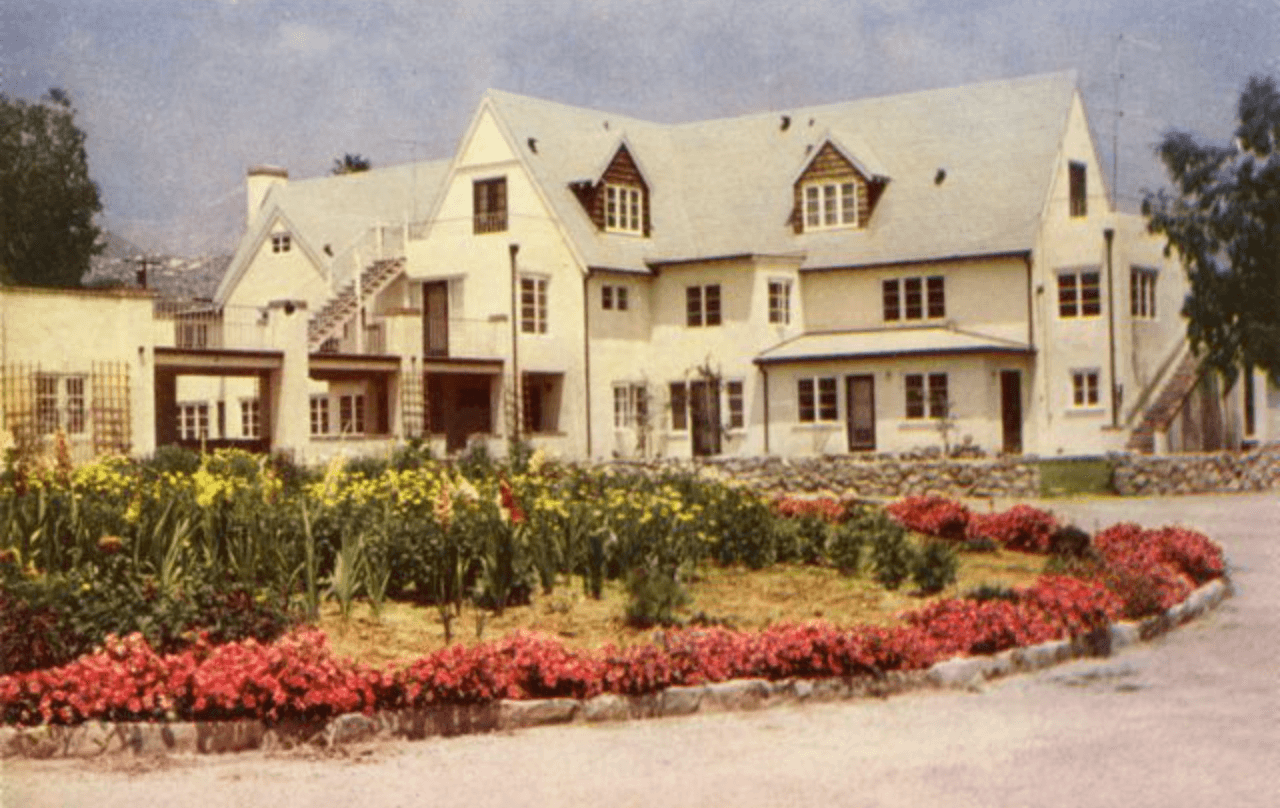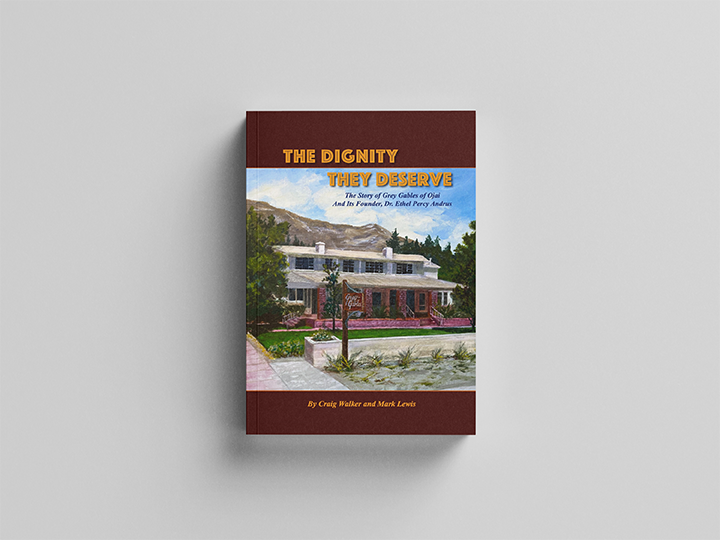
Dr. Ethel Percy Andrus & the Cold Spring Institute
A quote from Eleanor Roosevelt about the Cold Spring Institue from October 10, 1955:
HYDE PARK — Friday night, on the way up from New York, I stopped for dinner and to give a short talk at the Cold Spring Institute. This is a rather unique haven for older people. It was formerly the old Fahnestock estate, with barns and a charming house high up from the river and overlooking the lake. For nine months every year, groups of people come there who are over 55. Some of them have already been retired; others are facing retirement. All want to discover new skills and prepare themselves to continue to live productively and creatively. There are shops, with opportunity for study and an atmosphere of helpfulness. Here is a place where experiments can be made which will be of use to the various national and state groups working with older people. I found those assembled there of great interest…”
On February 11, 1954, Dr. Ethel Percy Andrus wrote an urgent letter to one of her former teachers at Lincoln High School, Gloria Gartz. Gloria was a wealthy heiress, the daughter of Kate Crane Gartz of the Crane plumbing family. Gloria’s grandfather, Richard Teller Crane, had been a major donor to Jane Addams’ Hull House, and her mother, Kate Crane Gartz, had donated to the Southern California Teachers’ Home when Ethel raised funds to expand the Pasadena facility in 1949.
Although Ethel had negotiated an outstanding purchase price for Grey Gables — $125,000 — she needed $50,000 for the down payment. The letter she wrote that day asked Gloria to loan NRTA the $50,000 to make the purchase. In the letter, Dr. Andrus spoke of the models she had used to plan her new, experimental retirement home. It would be a dignified, beautiful home like the Southern California Teachers’ Home and a place for retirees to explore new directions in life, like the Cold Spring Institute. (See Dr. Andrus’ letter here.)
Eleanor Roosevelt was a major supporter of the Cold Spring Institute. She also was interested in the social implications of aging and how to improve the lives of retired persons. Whether Ethel and Eleanor ever met or even communicated with each other, we do not know. In fact, we don’t know if Ethel ever visited the Cold Spring Institute. There are some coincidences that make us wonder if there might be a closer connection than we know.
First, the Cold Spring Institute was located on the Long Island estate of Dr. William Sergeant Ladd II, a prominent doctor, and businessman in New York. After Ladd’s death, his wife Mary offered the property for use by the Cold Spring Institute. Dr. Ladd was the son of William Mead Ladd, who had a winter home in Ojai, California, the home of Grey Gables. Growing up, William Sergeant Ladd II had spent many winters in the Ojai Valley. The Ladd’s Ojai home was one of two designed by the brothers Greene and Greene.
Second, the Director of the Cold Spring Institute was an educator, Dr. Ruth Andrus of Poughkeepsie, New York. We do not know if Ruth and Ethel were related, but we do know Ethel’s father had family living in New York and that Ethel had met them later in life.
From what we know about Dr. Ethel Percy Andrus, it is difficult to imagine that she would have based her experimental retirement home on another experimental project without having visited and studied it in depth.
The Wisdom of Dr. Ethel Percy Andrus
As a former English teacher, Dr. Andrus understood the power of words. She knew how to use words to educate others, whether her students, state legislators, presidents, or the American people. Dr. Andrus communicated her thoughts eloquently and persuasively, inspiring millions to join her cause. Her arguments were always based on facts and intelligent insight, which she delivered with heartfelt passion and empathy. Although soft-spoken, Dr. Andrus was unrelenting in her logic and purpose. She had an uncanny ability to lead her listeners through a problem in such a way that they would arrive at the solution she had seen long before.
As a former student once said, “Somehow, you found yourself acting like she wanted you to.” Dr. Andrus also knew how to turn ideas into action so their truth could be demonstrated. This was the purpose of Grey Gables, to demonstrate her core belief that retired people are fully capable of taking matters into their own hands and building a better future for themselves. Scott Hart, author of The Power of Year (1964): “The central idea of Ethel Percy Andrus was the power of years. It must have occurred to many others, but it was Ethel that turned ideas into action. What she saw cast upon the shelf in cavalier fashion were human lives, worn a little or much but bearing strong residues of experience and wisdom the young had yet to find. From the seeing came the idea, and from the idea arose action, good, brave, and unresting. What emerged was a wealth of writing [and speeches] that have inspired thousands to live again, not merely apart but within the torrent of forces driving the restless nation toward a better realization of its meaning and destiny.”
Check out additional articles about Dr. Andrus on OjaiHistory.com
On Aging, Growth, Maturity, and “The Power of Years”
ON LEARNING: “What isn’t realized is that [the problems of old age have their] roots in the same tragedy as juvenile delinquency. The desire to learn certain things is killed. A little child can drive you wild with his constant questions: “What’s that? Why? Where? When?” But the tragedy is — they stop asking. The same thing applies to older people when they lose their curiosity when they lose the adventure of finding out about things.” So we have to ask ourselves, why do adolescents and older people begin losing their curiosity, the adventure of finding out about things? Why do they stop questioning the universe? Part of it is the way society has defined adolescence and old age. For adolescents, their time to make a contribution is in the future; for older people, it is in the past — neither has a purpose…and this kills the desire to learn. What’s the purpose?
On Service to Others
“Creativity is ageless.”
“Retire not from, but to service.”
“Learning is timeless.”
On Society & the Social Basis for Life
ON NRTA & AARP: “NRTA was and is built upon the thesis that creative energy is ageless, that we must keep on being active, that our years of experience, understanding, and skill are reserves of energy and power that we must put to work to build richer, more interesting lives, to help stretch the purchasing power of the retirement dollars, to help in crusades that reach beyond the here and now and to find in such activity, content, faith, and hope.”
On Creativity, the Future, & Grey Gables
ON PRACTICAL IDEALISM: “Instead of sharing with other nations the American Dream of individual responsibility, of creative measures to relieve suffering, we have stressed the efficiency of our technology, the products of our inventiveness and effort. We have not realized that things do not stir one’s imagination. It is the poetry of life, the philosophy, the creed that excites and stimulates. We who are practical idealists have forgotten that it is our idealism, never yet realized but progressively being pursued, that should be our greatest article of export.”
On Retirement

More Info:
BACK
GREY GABLES
ETHEL & ELEANOR
RESOURCES
OJAI SENIOR (55+) POETRY CONTEST
This poetry competition aimed to celebrate the originality and individuality of Ojai seniors through poetry. It was organized by local high school student Gary Liu as a tribute to Ethel Percy Andrus, who founded AARP and Grey Gables in Ojai. It also aimed to honor National Poetry Month and Older Americans Month. The contest ended on May 31, 2023. Thank you to all the wonderful writers who submitted their work to this contest.
Read the winning poems here.
This section of our website has been funded by the National Trust for Historic Preservation's Telling the Full Story Preservation Fund, with support from the National Endowment for the Humanities. Any views, findings, conclusions or recommendations expressed on this website do not necessarily represent those of the National Trust or the National Endowment for the Humanities.






